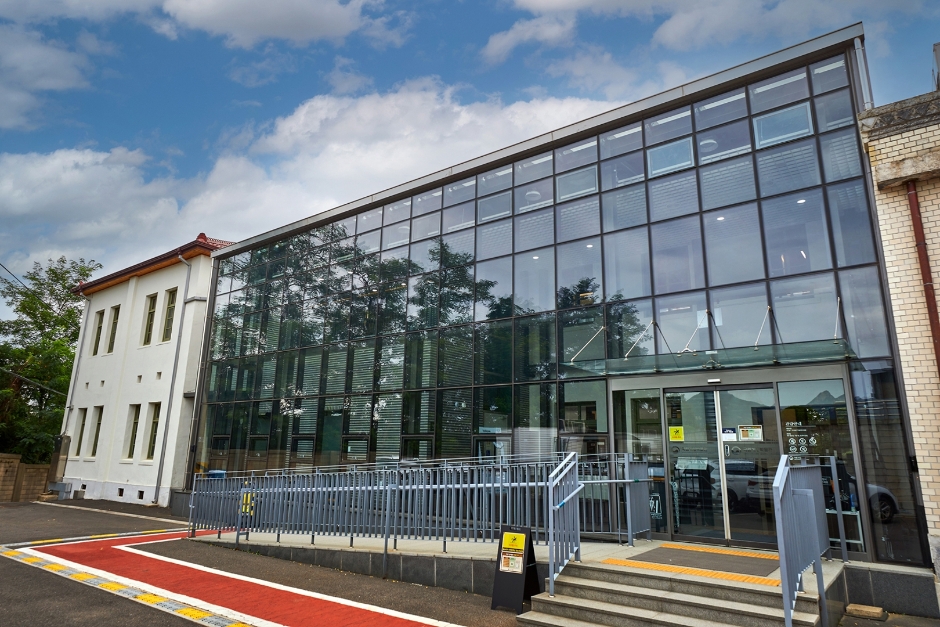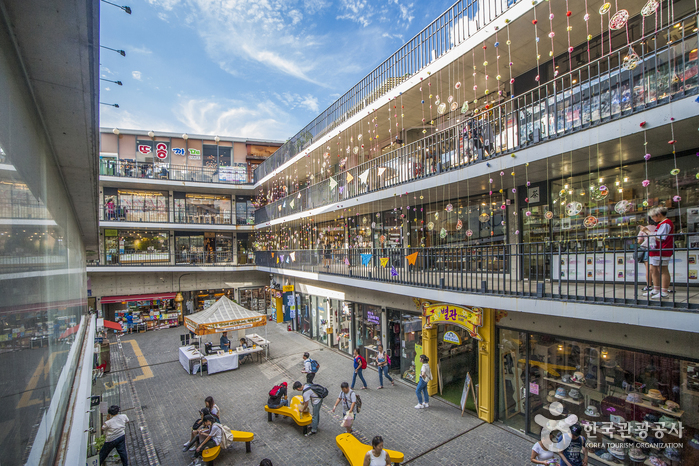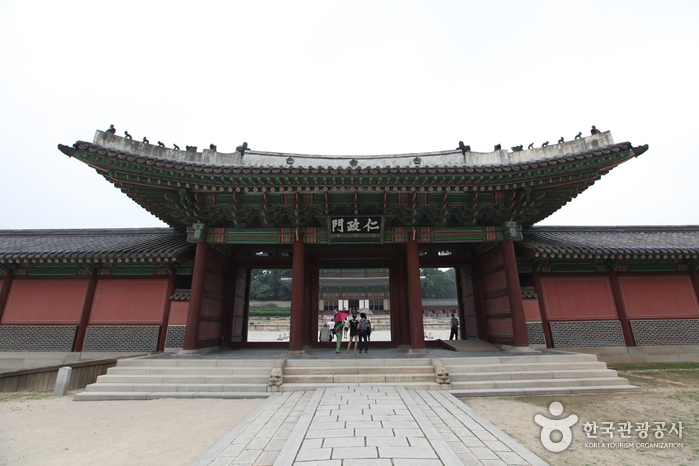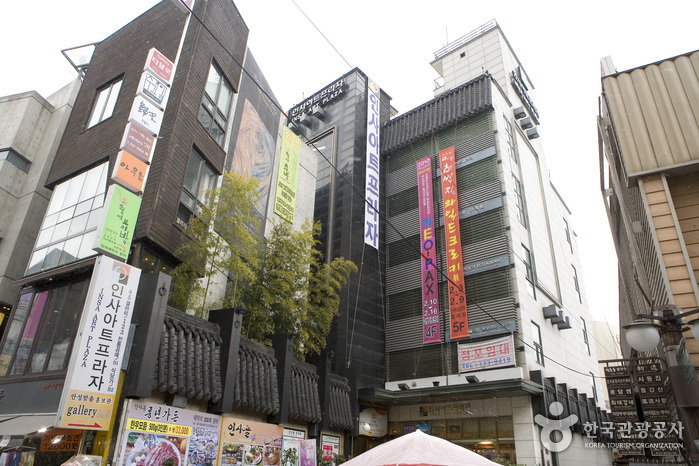Innisfree - Daehangno Branch [Tax Refund Shop] (이니스프리 대학로)
15.9Km 2024-04-19
51, Daehak-ro 11-gil, Jongno-gu, Seoul
-
National Meteorological Museum of Korea (국립기상박물관)
15.9Km 2024-03-26
52 Songwol-gil, Jongno-gu, Seoul
A museum where one can look at Korea's meteorological observation history and technological development through exhibitions. The museum has the world's first rain gauge, invented in 1441, in the early Joseon dynasty. The museum operates approximately 350 meteorological observatories across Korea and focuses on promoting the uniqueness and excellence of Korea's meteorological science. There are permanent collections and special exhibitions. The permanent collections focus on the history of meteorological science in Korea. At the same time, the special exhibitions take a closer look at the history and information about meteorological science and natural disasters (e.g., earthquakes) that occurred in various regions of Korea. There are experience programs related to meteorological science, such as making a rain gauge or learning about rain gauges.
Live Fusion Gukak Music Performance Fanta-Stick (판타스틱)
15.9Km 2020-04-03
146, Daehak-ro, Jongno-gu, Seoul
• 1330 Travel Hotline: +82-2-1330 (Korean, English, Japanese, Chinese) • For more info: +82-2-3143-5959
Heart-beating sounds of powerful percussion rhythm and Heart-filling melodies
of beautiful Gukak!
Story of Korea with Korean traditional instruments;
Dae-guem, Hae-geum, Gayaguen, and A-jaeng. When Fanta-Stick’s beating starts,
your heart-beat will go up to the highest with the percussion sounds. Modern
interpretation of Gukak based on tradition. Guaka is no longer boring. Experience
new Korea.
* Point 1) Exciting Live Battle show between the Percussion family and the
Gukak family!
- 100% Live Gukak performance that you can’t take your eyes
off.
- The spirit of fusion Gukak composed by Kim, Baekchan; a music director
of movies called ‘A Frozen Flower’ and ‘Blades of Blood’.
* Point
2) Collection of all representative contents of Korea
All the Korean representative
contents in one performance! Percussion, fusion Gukak, Comedy, Korean traditional
instruments, Korean traditional performances and so on.
* Point 3) Performance
only for audiences and with audiences
An interactive performance made with
audiences and performers together.
* Point 4) Fun! Main reason for watching
a performance
Have fun with an exciting percussion performance and fill
your heart with beautiful fusion Gukak performance.
Lloyd - Daehangno Branch [Tax Refund Shop] (로이드 대학로)
15.9Km 2024-04-17
1F, 31, Daemyeong-gil, Jongno-gu, Seoul
-
Lush Korea - Daehangno Branch [Tax Refund Shop] (㈜러쉬코리아 대학로점)
15.9Km 2024-04-22
27, Daemyeong-gil, Jongno-gu, Seoul
-
Homeplus - Uijeongbu Branch [Tax Refund Shop] (홈플러스 의정부)
15.9Km 2024-04-23
38, Cheongsa-ro, Uijeongbu-si, Gyeonggi-do
-
Olive Young - Homeplus Uijeongbu Branch [Tax Refund Shop] (올리브영 홈플러스의정부점)
15.9Km 2024-06-27
1F, 38, Cheongsa-ro, Uijeongbu-si, Gyeonggi-do
-
Insa-dong (인사동)
15.9Km 2024-05-17
62, Insadong-gil, Jongno-gu, Seoul
+82-2-734-0222
Insa-dong, located in the heart of the city, is an important place where old but precious traditional goods are on display. There is one main road in Insa-dong with alleys on each side. Within these alleys are galleries, traditional restaurants, teahouses, and cafes.
The galleries are the heartbeat of Insa-dong. There are about 100 galleries in the area offering every example of traditional Korean fine art from paintings to sculptures. The most famous galleries are Hakgojae Gallery, which functions as the center of folk art, Gana Art Gallery, which promotes many promising artists, and Gana Art Center.
The teahouses and restaurants are the perfect complement to the galleries. They are hidden deep within the twisting alleyways, making it feel like a treasure hunt. The shops in Insa-dong are very popular among all age groups, because each one is unique.
Every Saturday from 14:00 to 22:00 and Sunday from 10:00 to 22:00, the main street is blocked to vehicular traffic and it becomes a cultural space. Stores set up booths outside and Korean candy merchants and fortune teller stalls can easily be found; there are traditional performances and exhibits as well. Insa-dong is especially popular among international tourists. This is where they can experience and see traditional Korean culture first-hand, and also purchase pieces of fine art.
Changdeokgung Injeongmun Gate (창덕궁 인정문)
15.9Km 2025-01-14
99, Yulgok-ro, Jongno-gu, Seoul
+82-2-3668-2300
Serving as the main gate of Injeongjeon Hall, Injeongmun Gate was established in 1405 (5th year of King Taejo’s reign during the Joseon dynasty). Later on, the gate was destroyed by multiple fires during the Imjin War (Japanese invasion of Korea in 1592), therefore current form of the establishment displays designs that are more often seen in the late 19th century's. In addition, a lot
of subsidary marks and buildings are removed from the original places and relocated passing the time, however, still remains to represent prestigious ambience.
Injeongmun Gate served as the place for several coronation ceremonies of kings, prince's succession of throne, and many other national affairs celebrated by the royal members who gathered and aligned around this gate.
![Innisfree - Daehangno Branch [Tax Refund Shop] (이니스프리 대학로)](http://tong.visitkorea.or.kr/cms/resource/84/2878184_image2_1.jpg)


![Lush Korea - Daehangno Branch [Tax Refund Shop] (㈜러쉬코리아 대학로점)](http://tong.visitkorea.or.kr/cms/resource/83/2878183_image2_1.jpg)
![Homeplus - Uijeongbu Branch [Tax Refund Shop] (홈플러스 의정부)](http://tong.visitkorea.or.kr/cms/resource/38/2881338_image2_1.jpg)



 English
English
 한국어
한국어 日本語
日本語 中文(简体)
中文(简体) Deutsch
Deutsch Français
Français Español
Español Русский
Русский